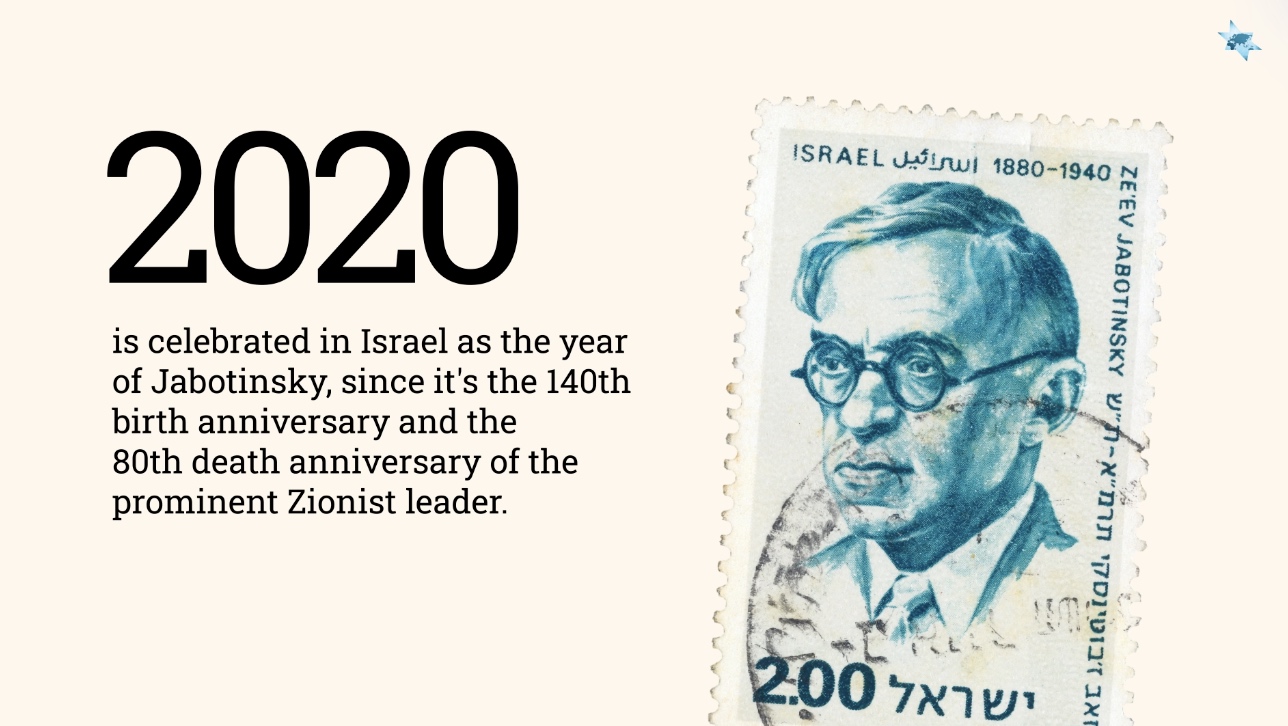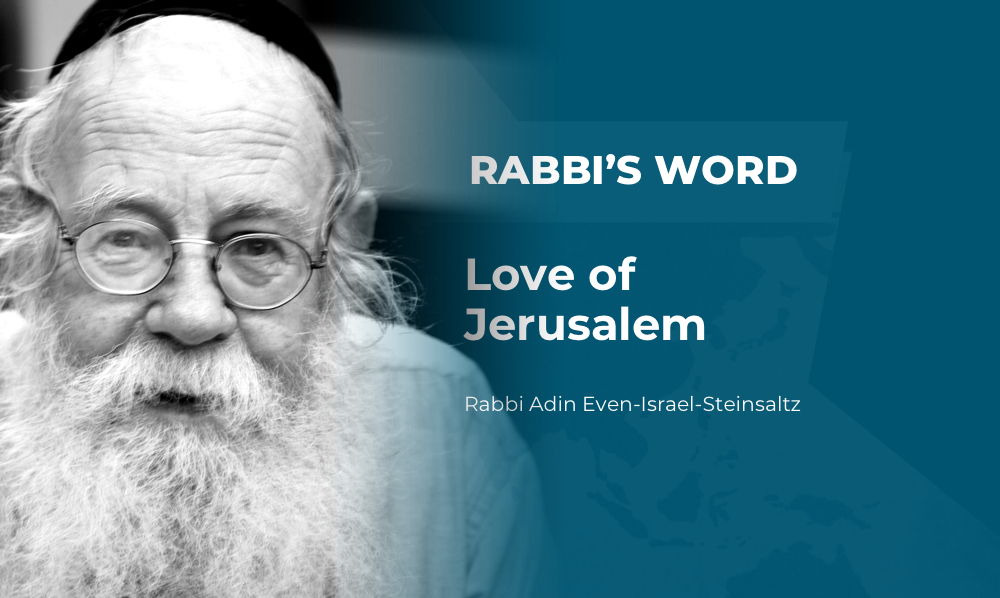Rabbi’s Word: Love of Jerusalem
We continue cooperation with the institute of Rabbi Adin Even-Israel Steinsaltz and publish specially prepared material for the communities of the EAJC members.
CONTACT BETWEEN HEAVEN AND EARTH
The special holiness of Jerusalem stems from its being “the site that God will choose” (Deuteronomy 12:5), the city where God decided to establish His House, the Temple, so that His Presence should dwell there.This connection between God and the city of Jerusalem is found not just in Heavenly Jerusalem, in the spiritual part of the city, but also in earthly Jerusalem, the city as we know it.
This may be compared to a geological fault. When the earth, which is composed of strata, is fractured as a result of various pressures, one section is displaced and pushed upward in relation to other sections, whereupon it can be seen that the strata are no longer continuous. Upper strata lie next to strata that formerly were much deeper. Similarly, in Jerusalem, instead of the upper and lower worlds being in normal relation, one above the other, they meet. Instead of the heavens being above and the earth below, there is a point at which heaven and earth are on the same plane.
The contact between heaven and earth is expressed in its most radical form in the Temple’s holiest place – the Holy of Holies. The Holy of Holies, as described by our Sages, is unlike any other space known to man. “The place of the ark and the cherubim is not included in the measured space.” – the ark and cherubim occupy no space in the chamber (Bava Batra 99a). On every side, space remains as though nothing were placed in the center.
The Holy of Holies is the center of this world. In the Holy of Holies lies the foundation stone, from which the universe was founded (Yoma 54b). According to the Midrash, this site is the source of the dust from which Adam was formed (The Midrash on Psalms 92). This site may be likened to the world’s “umbilical cord” – the point of connection to the Creator, the foundation and basis for all that was created in the wake of this single point. The Holy of Holies marks the central point of contact,which is ringed by the Temple Mount, the entire city, and finally all of the Land of Israel – all concentrated around the single point, around the place where the heavenly world and the earthly world touch.
There are various central places throughout the world. There is a place that is the earth’s magnetic pole, and another place that is the earth’s geographic pole. These places are extraordinary and are marked by unusual phenomena: The compass goes haywire, and day and night are confused. They are exceptions to geography. Jerusalem, too, is such an extraordinary place, as it is a place where this world and the supernal world intermingle.
Jerusalem lies at the margin of the material and the physical, on the edge of the nonphysical world. In Pirkei Avot we are told of the miracles that occurred in the Temple – the sacred flesh never spoiled; no fly was ever seen in the slaughterhouse, and though the people stood pressed together, they bowed with ample space. We also learn of miracles that occurred in the city itself – neither serpent nor scorpion caused harm in Jerusalem, and so forth (Avot 5:5).The contact with the holy brings about a change in the laws of nature even in the outer circle of the entire city.
Our Sages call Jerusalem “the pupil of the eye” (Kings I, 9:3). In fact, the eye is the only part of the body in which the nerve is connected directly to the brain. Outside impressions perceived by other parts of the body are filtered and processed, from the outside reach inside. In other parts of the body, the impressions are filtered and processed, but in the case of the eye, they enter directly, as they are. Jerusalem is an opening of this kind, a direct passage between the earthly world and the heavenly world. It is a gateway to heaven, a passageway from the physical to the spiritual. For this reason we pray in the direction of Jerusalem, as it says in Solomon’s prayer: “And they pray to You in the direction of their land which You gave to their forefathers, the city which You have chosen, and the House which I have built to Your Name”( Kings I, 8:48). Prayers are directed toward Jerusalem, via which they ascend heavenward.
Because the pupil forms the link between the brain and the external world; hence, it must be guarded to the utmost. Likewise, Jerusalem is the most sensitive place in the world. When someone smites Jerusalem, the eye of the universe, it is as painful and dangerous as any blow to the physical eye. More than what happens anywhere else, things that happen in Jerusalem are liable to have implications for the whole world.
The connection to the supernal worlds produces a flow of holiness through the Holy of Holies, Temple, and Temple Mount to the entire city – not just to the exalted things in the city but to all its physical parts: its houses, its stones, even its thorns, and all who dwell in it, great and small. The stones of Jerusalem are different; its thorns are all of gold.
Jerusalem is “the city perfect in beauty” – more beautiful than many cities in the world. But the city’s beauty does not stem from handsome buildings or lovely external design. As a rule, the opposite is true. Jerusalem’s beauty, its sun and light and other beautiful things with which it is endowed, stem from its inwardness, from its holiness.The surplus of Jerusalem’s inwardness, the drops that overflow from its holiness, are what make it beautiful and give it grace.
It does not matter whether the architecture of Jerusalem is extraordinarily beautiful or not. When one looks at the city as a whole, there is nothing more beautiful than it. When something is truly beautiful; its flaws do not detract from its great beauty; on the contrary, they give it added grace. Thus, even the things that are not beautiful about it join in forming Jerusalem; every part, every corner, and every crumb are there in order to add beauty.
Jerusalem’s beauty slowly spreads to its various neighborhoods. Indeed, it takes some time until a new neighborhood is absorbed into Jerusalem and becomes part of it; its inhabitants must also with time turn into Jerusalemites. Just as when a person enters a perfume shop, perfume adheres to him whether he likes it or not, the Jerusalemite nature sticks to its inhabitants. To be sure, this process may sometimes take a generation, but ultimately everything is absorbed into Jerusalem, and this adds to its physical perfection.
The importance of Jerusalem Day far exceeds the commemoration of the day on which the city was liberated from foreign rule. This day’s eminence is found in that it is celebrated in honor of this unique city, “a rose of Sharon, a lily of the valleys” (Song of Songs 2:1). It is a day that does not relate specifically to the destruction or rebuilding of Jerusalem, to its distress or to its beauty. Rather, it is day of thanksgiving and joy over the city’s very existence, joy over the fact we have merited to have in our world a point of connection with the supernal world.
The holiday over Jerusalem is a new holiday; in former generations, we were not privileged to celebrate it. We did know that it is possible to offer praise and rejoice over Jerusalem even before it is rebuilt completely; that it is possible to give thanks for the fact that, despite the humiliations and after all the degradations, Jerusalem cannot be deprived of its uniqueness. We were unaware that we could give praise for the fact that even when Jerusalem Is degraded, its essential nature cannot be concealed. Jerusalem can be exiled and disdained, but it is still a royal city, like the palm. Even when it is in the depths of Sheol, it is still the source of blessing.
The Prophet Isaiah prophesied: “Rejoice with Jerusalem and be glad for her, all you who love her! Join in her jubilation, all you who mourned over her” (Isaiah 66:10). One should mourn over Jerusalem, but one should also be among those who love her. One should love not only her holy places, but also the city in its own right, as it is, with its neighborhoods and its cats, its fences and stones, the lunatics and the loafers are all part of it. One must love Jerusalem not just because it is home, but because there is no other place like it. For all these reasons, we hold a celebration, in honor of Jerusalem – earthly Jerusalem and Heavenly Jerusalem.





